Air pollution and iodine from the ocean contribute to damage to Earth’s ozone layer.
A new paper quantifying small levels of iodine in Earth’s stratosphere could help explain why some of the planet’s protective ozone layer isn’t healing as fast as expected. The paper posits a set of connections that link air pollution near Earth’s surface to ozone destruction much higher in the atmosphere. That higher-level ozone protects the planet’s surface from radiation that can cause skin cancer and damage crops.
“The impact is maybe 1.5 to 2 percent less ozone,” said lead author Theodore Koenig, a postdoctoral researcher at CIRES and the University of Colorado Boulder, referring to ozone in the lower part of the ozone layer, around Earth’s tropics and temperate zones. “That may sound small, but it’s important,” he said. A slightly thinner ozone layer means more UVB radiation can get through to Earth’s surface.
Koenig’s paper, the first “quantitative detection” of iodine in the stratosphere, was published today (January 13, 2020) in the Proceedings of the National Academy of Sciences, with co-authors from CIRES, CU Boulder and other institutions.
Chemicals once used widely in refrigeration, spray cans and solvents can eat away at Earth’s ozone layer. After scientists discovered the stratospheric “ozone hole” in the 1980s, nations around the world signed the international Montreal Protocol agreement to protect the ozone layer, limiting the emission of ozone-depleting chemicals.
“The ozone layer is starting to show early signs of recovery in the upper stratosphere, but ozone in the lower stratosphere continues to decline for unclear reasons,” said Rainer Volkamer, a CIRES Fellow, CU Boulder professor of chemistry and corresponding author of the new assessment. “Before now, the decline was thought to be due to changes in how air mixes between the troposphere and stratosphere. Our measurements show there is also a chemical explanation, due to iodine from oceans. What I find exciting is that iodine changes ozone by just enough to provide a plausible explanation for why ozone in the lower stratosphere continues to decline.”
For the new work, Volkamer and his colleagues pored through data from several recent atmospheric research campaigns involving National Science Foundation and NASA research aircraft, and which included instruments that could pick up tiny amounts of iodine and other so-called halogens in the lower stratosphere during the daytime. Halogens, which also include chlorine and bromine, are key to ozone destruction.
It’s been tricky to get data from this part of the atmosphere, Koenig said. “We knew there was some iodine there, but we couldn’t pin numbers on it until now. This is a result of technological advancement: Our instruments just kept getting a little bit better and eventually, it was enough to make measurements.”
The amount of iodine they picked up in the lower stratosphere is tiny, similar to adding a few bottles of water to the Great Salt Lake. But iodine is extremely effective at destroying ozone, and generally speaking, the amount the scientists measured is enough to explain the level of ozone destruction in the lower stratosphere.
So where did the iodine come from? Strangely it seems to be a result of air pollution down here at the surface of the planet, the new assessment reports.
Ozone at Earth’s surface is a pollutant, one that is regulated in the United States and elsewhere because it can harm people’s lungs. And when ozone pollution interacts chemically with the surface of oceans, it can “pull” naturally occurring iodine up into the atmosphere. Other studies have shown that in the lower atmosphere, iodine levels have roughly tripled in concentration since 1950.
So some of that iodine is apparently making it up into the stratosphere, where it can trigger ozone depletion, Koenig said. “This should not diminish the success story of the Montreal Protocol, but still, it is important. The lower stratosphere should have improved already, not gotten worse.”
“There’s something going on resulting in deterioration. Our hypothesis is that ozone at the surface is destroying ozone in the stratosphere,” Koenig added.
It will be important to study the hypothesis in greater detail, Koenig and his co-authors said. If ozone pollution at Earth’s surface increases, for example, could it trigger even more lower-stratosphere ozone layer destruction?
Co-author Pedro Campuzano-Jost, a CIRES research associate, said the success of the research project is partly due to the unique scope of NASA’s ATom (Atmospheric Tomography) mission, which flew a research aircraft across the globe; and NSF’s CONTRAST (Convective Transport of Active Species in the Tropics) mission, which detected iodine oxide radicals in the stratosphere.
“Half of the places we went had never been sampled before for aerosols,” Campuzano-Jost said, and that is the kind of opportunity that leads to new discoveries.
Volkamer and his colleagues hope to successfully pitch a new mission to study iodine chemistry in greater detail, to better understand the future of Earth’s protective ozone layer.
Reference: “Quantitative detection of iodine in the stratosphere” by Theodore K. Koenig, Sunil Baidar, Pedro Campuzano-Jost, Carlos A. Cuevas, Barbara Dix, Rafael P. Fernandez, Hongyu Guo, Samuel R. Hall, Douglas Kinnison, Benjamin A. Nault, Kirk Ullmann, Jose L. Jimenez, Alfonso Saiz-Lopez and Rainer Volkamer, 13 January 2020, Proceedings of the National Academy of Sciences.
DOI: 10.1073/pnas.1916828117

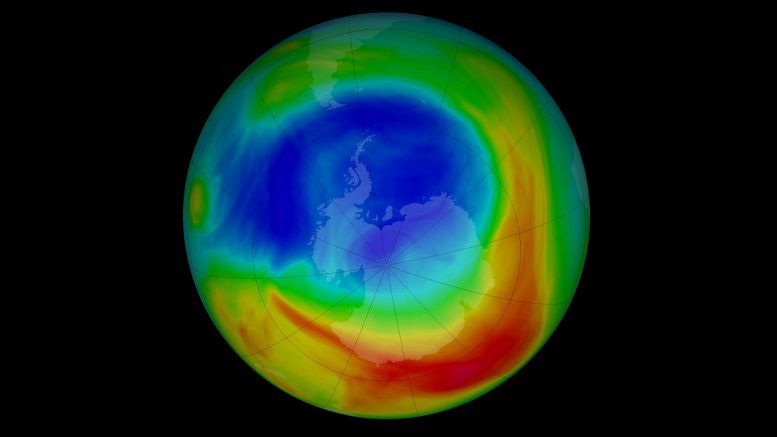

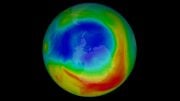
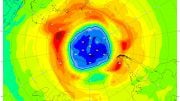
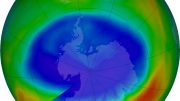
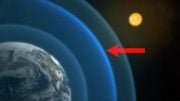
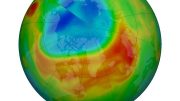

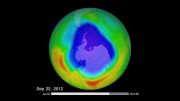
Be the first to comment on "Ozone Depletion in the Lower Stratosphere Due to Iodine From Oceans"